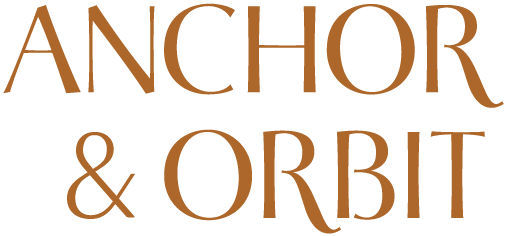Ask an Anchor: PART 2 - Collaboration without depletion with Claire Seizovic
/This week Sarah called one of her longtime collaborators, Claire Seizovic, to talk about the ups and downs of working with others. Previously, Claire was a participant in the Anchor & Orbit Business Foundations Program, and Claire worked with Sarah to design the branding for Cash Flow Cleanse. In addition to their work, Claire co-founded Cultivate Tucson and regularly connects her design and experience clients with other service providers to bring big projects to life. Read Part 1 here.
In this conversation, Sarah and Claire discuss...
Investigating your desires and boundaries before diving into collaboration
There’s a lot of value in looking ahead and making sure your values align with whoever you plan to collaborate with before you commit. But the first thing to consider is what are your boundaries/values when you’re looking to start a new project.
Consider whether you’re actually looking for a collaborative project/new business, or if you simply need a new creative outlet. Claire has played in orchestras and chamber music settings and enjoys having that as an avenue for creativity in her life. Creativity doesn’t have to be connected to your work to be valuable.
It’s essential to be clear about how much time and energy you have because collaborations are often a lot of work -- even the good ones. In fact, Claire said that in her experience, there’s no way to put in less and get more. Especially at the beginning. “Maybe there’s a miracle way to collaborate where you don’t get depleted,” Claire said. “But I’ve found that I usually put in a lot of energy in the beginning to align myself, my collaborators, and our values, and then the payoff comes out later if it’s done well.”
Going through potential scenarios with collaborators
Something Claire said she learned from past collaborations is that you should actually go through X, Y, and Z scenarios to make sure you’re aligned with your collaborator/team. Claire: “You want to make sure that you have the same gut reaction for how you’d handle situations.” Talk with your collaborators about: What do we do if the project is wildly successful? Are we OK if it stays small? What if the project totally fails? Going through these ‘what ifs’ helps you make sure you’re aligned on multiple points along the path… as Claire said, “You don’t want to get to a fork in the road and have one person ‘guns ablaze’ and another person saying ‘i just want this to be a side thing.’”
Planning ahead, but not so far ahead you get stuck
Sarah brought up that people often get stuck in the contract phase, and that can be an unnecessary hold-up. Sarah: “A lot of communication about boundaries and intentions through email can be really successful.” So, if you’re thinking you need to hire a lawyer...maybe not. If you’re running through specific scenarios and laying out boundaries via email, that clarifies what everyone is agreeing to and builds a paper trail in case you need it in the future.
In addition, Claire mentioned, the beginning of a project may not be the time to invest in something so iron-clad if you don’t even know if you’ll make a profit.
Remember: Don’t get so far ahead of yourself that you end up running in circles.
Building your own safe space for exploration
As service providers, you don’t always get to try the things you want to do within a client project. So, an extra project outside of work can be a safe testing ground for skills you want to develop or theories you want to test.
Additionally, the skills you develop within a side project or collaboration can shift your business. After spending time examining Claire’s business goals while a participant in the A&O program, Claire and Sarah had an epiphany -- some of the things Claire was doing as a collaborator she could start to offer as client services. Since then, Claire’s work has grown to include more and more experience design and bringing people together to complete a project in addition to the graphic design she was already comfortable with.
Claire: “Collaboration can definitely lead to a shift in what you already have going on, and enlighten you about skills you have that aren’t being used in client work.”
Collaboration is what you (and your partner) make it
Claire: “I believe that when we join forces, it ends up leading to a more beneficial result, both for the collaborators and for the people impacted by the business.”
Collaboration can be a way to shake yourself, hone a skill, grow relationships and more (it’s not entirely predictable)
Claire: “You can make a plan, but there are a lot of things that stemmed from past collabs that I really couldn’t predict because we started out just solving a problem in the community. It’s important to identify what you’re looking for and talk to other people about other ways you can fulfill that want that maybe you don't even know.”
If it sounds exciting to you, go for it! And don’t feel like you have to plan every single thing out. Leaping ahead is good, too.
Both mentioned the added benefit of accountability within a collaboration. Claire: “You get forced, in a good way, to do things out of your comfort zone. And you have other people to help push you along and build on success.”
And, since collaboration is a group effort, things can shift within a project as you all move forward as you see fit.






